The Ultimate Guide to an Email Marketing Plan
Email marketing is a popular means of communicating and interacting with customers. It doesn’t require huge investments or special skills. However, it does require your commitment and devotion. Reaching out to subscribers with emails is not enough to unlock its true potential. You need a full-fledged strategy.
An email marketing plan is a well-structured, properly arranged document that describes the company’s email marketing goals and how it intends to achieve them. It bridges the gap between where the company is now and where it wants to get in the future.
It comes in all shapes and sizes and largely depends on the company’s intentions in the channel. As a rule, it features tasks, initiatives, resources, and people in charge, thereby creating a clear path to the goal. This clarity, teamed up with organizational order, helps the company move forward, avoid hasty decisions, and channel efforts in the right direction.
An email marketing plan is also regularly reviewed and updated to reflect changes and achievements. It provides a solid base for revising and adapting the email marketing strategy to the current landscape with real-time data.
Let’s examine this integral tool thoroughly to see how it can help improve your brand positioning in the email channel, capitalize on your resources, and unlock the potential of email marketing.
Why Do You Need an Email Marketing Plan?
Did you know that organizations with business plans are 30% more likely to succeed in their endeavors than those without them? According to TAULLI, a solid, well-documented, and regularly revisited plan helps companies achieve their goals more effectively and yield greater results.
With Postcards Email Builder you can create and edit email templates online without any coding skills! Includes more than 100 components to help you create custom emails templates faster than ever before.
Free Email BuilderFree Email TemplatesIn management, effective planning is a cornerstone of everything. It is a pathway to a company’s successful existence, a reliable way to stay true to its mission, and a way to ensure the brand’s growth and development.
Here are several good reasons to introduce an effective email marketing plan in your routine.
Minimize Risks
A plan creates a coherent and transparent map of action on all micro and macro levels. It ensures routine clarity and avoids misleading or on-spur decisions, encouraging the company to follow the laid-out marketing strategy. That drastically minimizes the risks of errors across all boards.
Amplify Focus
There are many ways to reach customers these days. It is easy to get carried away with modern solutions and miss key dates in the email marketing calendar. Effective planning eliminates distractions and focuses everyone on the goal and mission.
Gathering crucial information under one roof aligns employees across departments and channels their efforts in one direction. As a result, companies do not get sidetracked. They set their priorities right, pursue their original strategy, and make email marketing work for them as intended.
Improve Long-term Strategy
Effective planning triggers a long-term strategy. It answers several crucial questions, like where the business is right now, what it should look like in the future, and, most importantly, what the company needs to do to get there. These senses of understanding and action-based predictions provide a solid foundation for a long-term strategy and brand growth.
Surfaces Strengths and Weaknesses
Effective planning identifies the company’s strengths and weaknesses, revealing leadership, skills, communication, and relationship gaps. It uncovers what works and does not work for the company, gives insights into team capacity, and demonstrates the efficacy of long-term marketing efforts. This information allows companies to fill the gaps, address their issues, and capitalize on their advantages.
Successful Delegation
Much like in management, planning in email marketing underlies successful delegation and communication among departments across various verticals. As the company grows, expands its presence, and acquires new staff to conduct more complex email marketing campaigns, it needs a proper tool to delegate authority, set responsibilities, maintain a clear dialogue between departments, and put everyone on the same page. An email marketing plan addresses all those needs.
With Startup App and Slides App you can build unlimited websites using the online website editor which includes ready-made designed and coded elements, templates and themes.
Try Startup App Try Slides AppOther ProductsFacilitate Decision-making Process
Finally, an email marketing plan simplifies decision-making. As we have already pointed out, the marketing landscape is constantly evolving. Following mainstream trends and staying true to your original strategy is hard. On top of that, when opportunities appear from nowhere, there is always a desire to say yes to new potential initiatives.
Email marketing departments constantly encounter situations that require immediate solutions. With an effective email marketing plan, they may simplify their decision-making process by selecting opportunities that agree with their long-term strategy and prioritizing those that yield the best results.
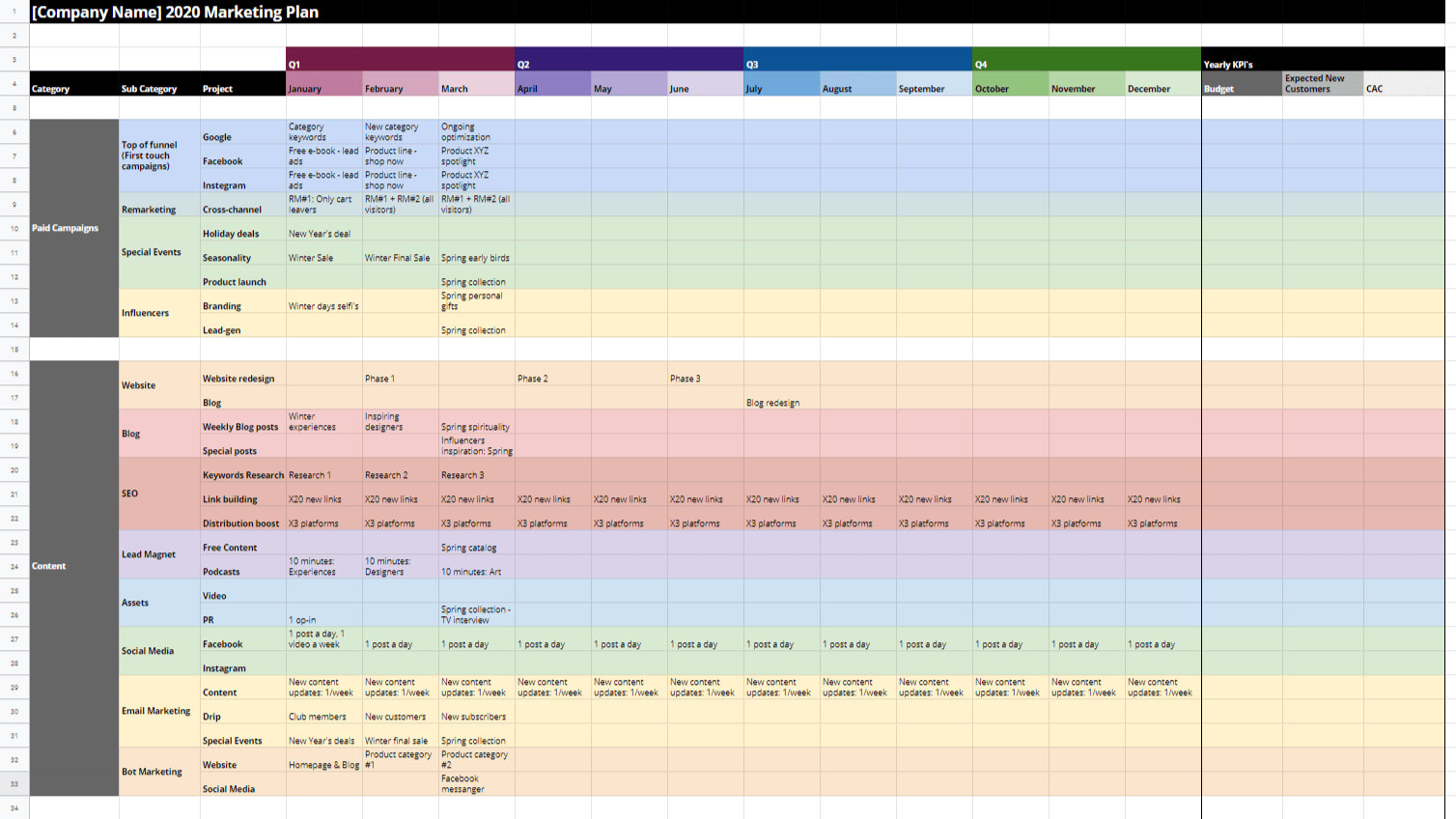
Email marketing plan example by Mayple
Benefits of Having an Effective Email Marketing Plan
The benefits of having an effective email marketing plan extend far beyond improving the organizational success ratio. As a reliable, time-proven, flexible, and straightforward instrument to turn a company’s vision into a series of actionable steps, it takes the development of the brand to the next level. It gives your company a solid chance to become a serious player in the field and potentially a leader in the niche. Let’s consider what it can do for a company.
Encourage Proactive Behavior
An effective email marketing plan covers various areas, from goal setting to delegation. It clarifies the strategy and, most importantly, details it so that every member understands the company’s intentions. This fosters proactive behavior since everyone involved does not have to wait for instructions. Each member is empowered to act preemptively and take initiative when opportunity strikes.
Improve Teamwork
Planning sets the direction for the entire company. It gets everyone on the same page and establishes priorities for tasks. It clarifies what actions should be taken to achieve the most important goals.
As a unified space where everyone can get their answers, from what campaign to run to who is responsible for its success, it aligns all the company’s resources. This improves communication and collaboration inside the team and among the departments, making the work productive and less stressful.
Drive Better Target Achievement
An effective email marketing plan is a driving factor for performance. It reduces uncertainty and cultivates an inspirational environment for employees.
Encouraged by proactive behavior and a productive environment, the marketing team is more willing to unlock their potential, exercise creativity, and maximize each campaign to achieve even higher goals.
Optimize Resources
Planning gives companies accurate, wholly-grained control over project components, campaigns, and strategies. They may use resources to their fullest potential, avoid costly issues and delays, optimize resources, and anticipate roadblocks.
When well done, an email marketing plan leads to maximum organizational capacity, productivity, efficiency, and competitiveness. It might also empower teams to use resources to achieve the highest return with minimal effort and expenditure.
Amplify Success across KPIs
Along with tools to measure progress, an email marketing plan encourages the company to create high-converting email campaigns. This hyper-personalized and tailored approach improves key metrics such as deliverability, open rates, and conversions, leading to better brand positioning and successful outcomes.
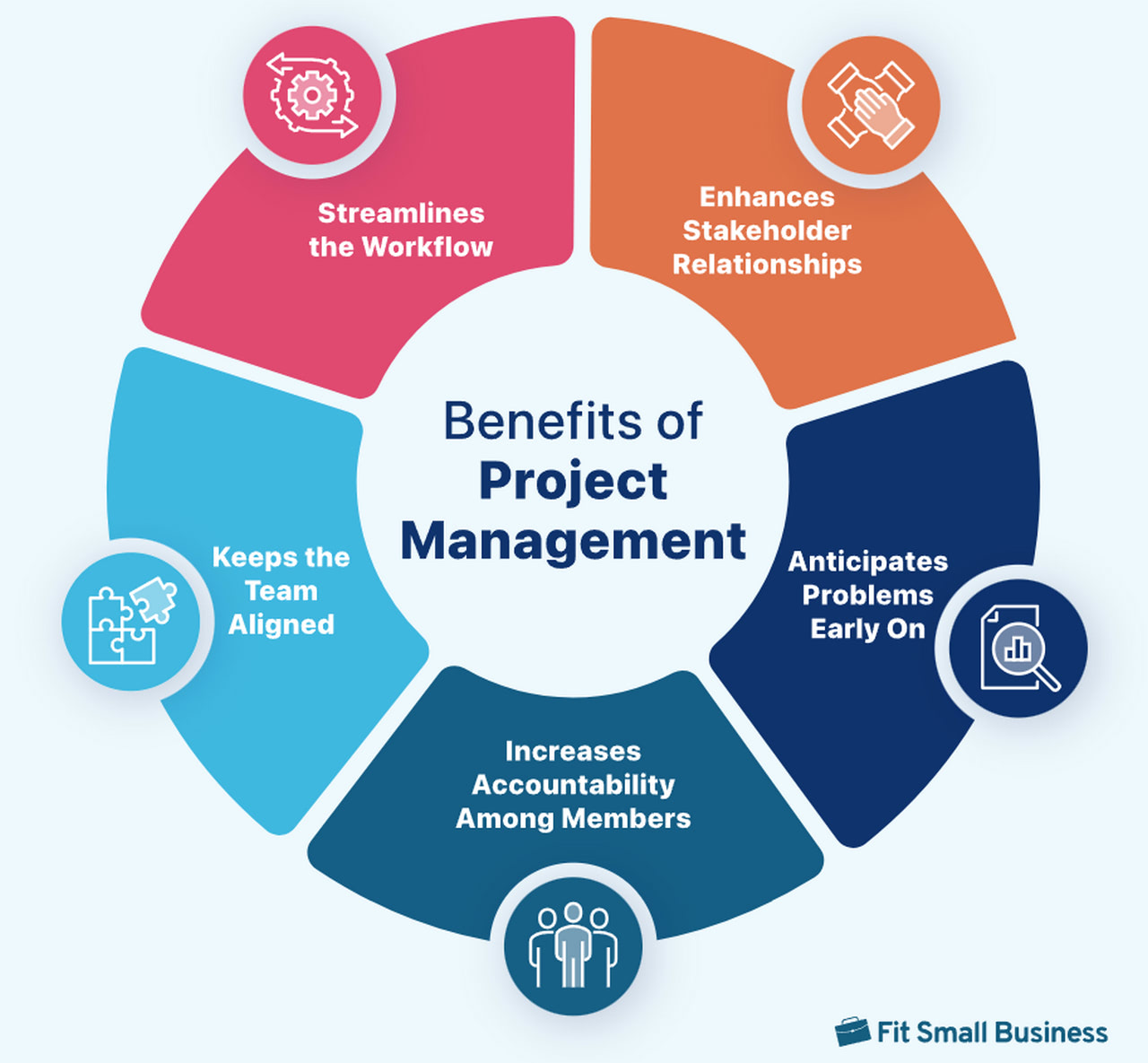
Benefits of project planning (infographic by Fit Small Business)
How to Create an Effective Email Marketing Plan
Creating an effective email marketing plan requires significant planning and forethought. It covers everything from describing upcoming campaigns to revisiting and updating the roadmap. Depending on the company’s goal, mission, capacity, and product, it may look different even for companies from the same niche.
Let’s consider the basic steps of devising an effective email marketing plan so that you have a solid foundation for creating a roadmap tailored to your specific needs and goals.
Step 1 – Determine the Purpose of the Plan
Email marketing plan differs from company to company. Some need just a to-do list that they update regularly, while others prefer a well-established project plan that describes each campaign and tactic in detail. To understand what you need, ask the following questions:
- What is the purpose of an email marketing plan?
- Who are the people who will read it?
- How will it collaborate with other action plans?
- What areas should it describe?
- What should it look like?
- How often should it be revised and changed?
Determining the email marketing plan’s purpose gives you the clarity necessary to focus on your task. It gives insights on where to move and what to include, enabling you to pursue marketing goals effectively.
When you decide on the purpose of your email marketing plan, it is crucial to set objectives. They will help measure the progress and success of introducing an organizational unit into the workflow and indicate what improvements should be made.
Step 2 – Research
For many companies, an email marketing plan shapes a strategy. It guides a team to project completion and describes every step and effort. A knowledge base is needed to underlie informed decisions, so companies should research and gather as much industry data as possible.
Start by collecting data from your previous campaigns. Focus on key metrics such as conversion rates, open rates, engagement patterns, deliverability rates, sending times, etc. The past performance data shows an overall picture of your company’s presence and success in the email channel. It also provides insights into improvements and strategy adjustments that must be considered when devising and advising the plan.
Afterward, research your niche representatives and gain market insights. Examine statistics, industry benchmarks, current standards, consumer behavior and preferences, and average key metrics. This knowledge gives you a solid base for creating an effective email marketing plan where facts, data, and industry benchmarks support each decision.
Finally, consider this stage as an ongoing process. The company should conduct regular research because customer preferences and expectations constantly change. Adjusting an email marketing plan to the current landscape makes it relevant and effective.
Step 3 – Set SMART Objectives
If you have a clear target, you are more likely to succeed with your email marketing and organizational structure. Therefore, the next step is to set SMART objectives. They are the quintessential building blocks that provide a direction for your efforts and initiatives from the beginning.
Focus on your overall marketing strategy, its tasks in the email channel, and, in particular, upcoming campaigns. Ask yourself, why are you collecting subscribers and sending emails? Do you want to build brand identity, establish healthy customer relationships, or drive traffic to your landing pages? Here are some other popular targets that you might want to pursue:
- Raise brand recognition
- Establish authority
- Drive engagement to your brand and product
- Expand your reach and market
- Improve deliverability metrics
- Increase conversions
- Nurture subscribers
- Reduce customer churn
- Re-engage customers
- Gather feedback
Those desires should be restated in the form of measurable, realistic goals. Make them as specific as possible and always assign deadlines. Along with that, determine metrics that will underlie the measurement of your success.
It is important to note that choosing one or two objectives is wise instead of tackling multiple goals simultaneously.
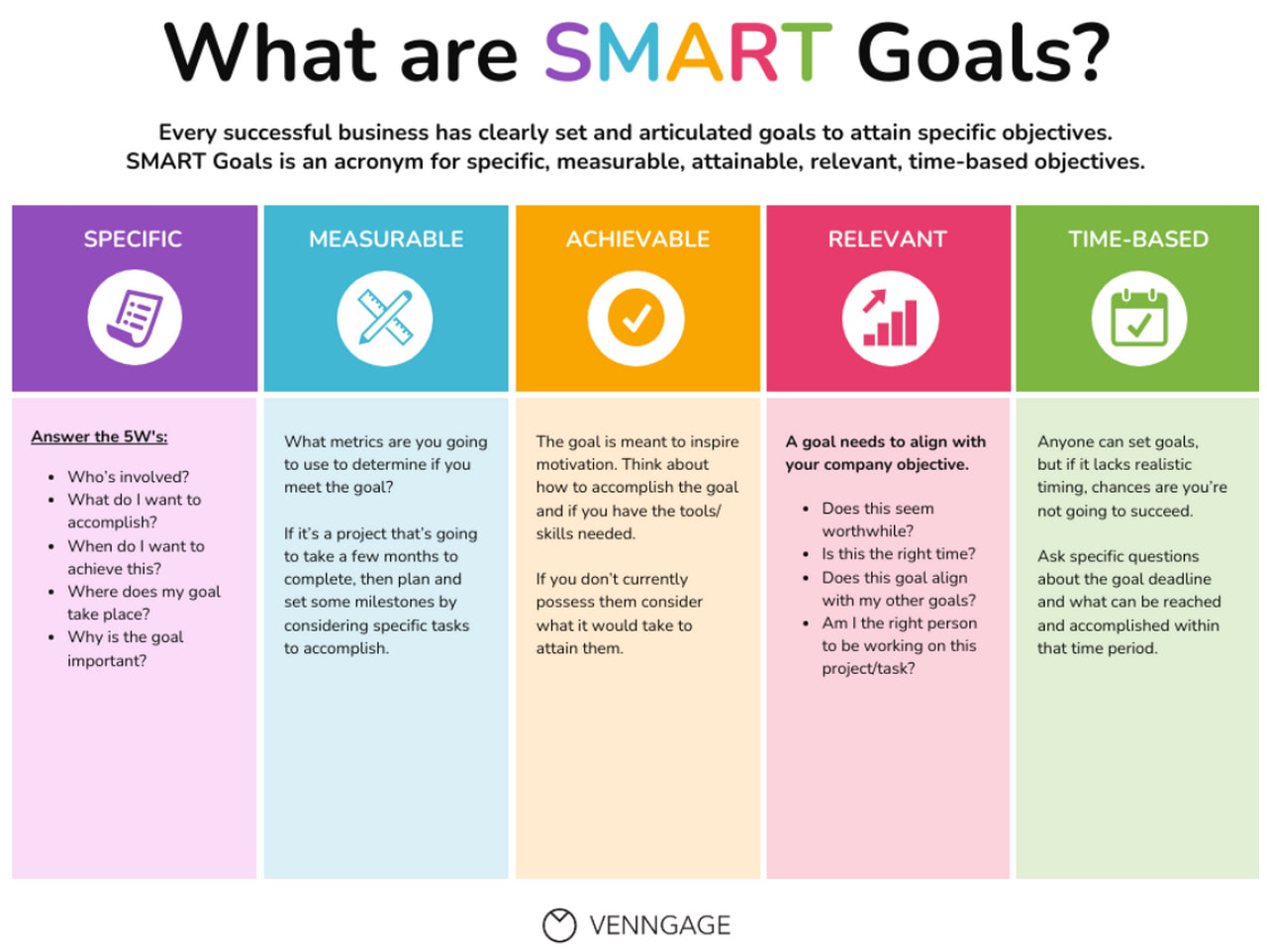
What are SMART goals? (infographic by Venngage)
Step 4 – Define Measurement Tools
The next step is to define the measurement methods. Decide on the tools, processes, and people in charge to discover whether those goals have been met. You might need professional software to track and analyze deliverability rates, open rates, click-through rates, conversions, leads, forwards, and unsubscribe rates.
There are a slew of specialized software tools that you can use. Choose one that fits you the most.
Step 5 – Know Your Target Audience
Your target audience is what you aim for in every email. They are the lifeblood of your business and email marketing. Knowing them beyond the basics is vital to creating tailored email newsletters aligned with their values.
Gather as much information about your customers and prospects as possible. This includes behavior patterns, preferences, expectations, interests, lifestyles, popular communication modes, the preferred cadency, and even problems they experience.
You may use different solutions for collecting data, such as tracking their presence on your website, analyzing previous email campaigns, checking out their purchase history, and asking them directly. Use this knowledge to develop accurate customer personas and ideal buyers.
At this point, you may also divide your customers into groups with similar needs, preferences, or cadence. Although wholly-grained segmentation is impossible without a content strategy, it will still be a head start for creating hyper-personalized campaigns and targeted emails later.
Step 6 – Bring in Brand Identity
Promoting your brand identity in every tactical step is crucial when creating an email marketing plan. Introducing your company’s vision in the marketing efforts cultivates consistency in communication and strengthens the perception of the brand. It may also increase authority, reinforce positioning, and improve relationships with clients.
List your brand identity key elements, including mission, vision, value, proposition, and positioning statement. Use them to determine how your target audience should perceive your brand and content. Provide insights for your employees on what tactics align with brand identity and what do not. That will give them the right direction for their initiatives.
Step 7 – Outline Content Strategy and Types of Emails
Your email may look like a compact landing page when created in Postcards. However, it is still a distinct type of media with its constraints. You cannot only rely on a website-like appearance to deliver the message and impact the audience. Content is the key to achieving your goals. Outlining your content strategy is the next vital step in developing an effective email marketing plan.
During this stage, you need to decide which email type you want to send. It could be info emails, promos, transactional emails, seasonal emails, holiday emails, retention emails, cold emails, etc.
Then, determine the topics assigned to each type and campaign. Make sure they align with your brand identity and ultimate objectives.
Afterward, assign triggers for each type. For example, retention campaigns should be run for customers who ignore your digital correspondence for at least six months, while thank you notes should be sent automatically for each customer immediately after the purchase.
Finally, create a style guide for each type. It should include visual elements, tone, voice, and language.
Step 8 – Involve Email Marketing Calendar
An email marketing calendar is a well-structured schedule covering all crucial event-based campaign information. It features key dates that underlie email marketing strategies, such as holidays, local festivals, sales, product launches, business events, and the start of specific campaigns. It is a core of the email marketing plan; therefore, this stage requires your undivided attention and devotion.
You need to plot your email marketing plan around the calendar. Decide what key dates and campaigns you will feature in the plan. Prioritize those that provide value to your customers and get you closer to your ultimate goal.
Then, focus on each key date and campaign. Describe it in detail, mentioning every crucial aspect, metric, step, task, and test. It may help to include explicit information about each campaign, such as headline, subject line, email type, date and time, audience segment, content, design guide, and key performance metrics. Here, you need to set time frames and deadlines and assign people in charge of tasks.
When well done, plan at this stage creates order out of chaos, defines gaps, and identifies campaigns that run into one another, giving you real insights on improving your strategy in an email channel.

Email events calendar by Louisem
Step 9 – Commit to the Email Marketing Plan
The effectiveness of an email marketing plan largely depends on your commitment and devotion. It is highly recommended that you allocate your time and effort to devising a relevant audience-tailored brand-specific plan.
Note that your email marketing plan is not a one-time event or carved in stone. As the landscape evolves, trends emerge, and the target audience changes its preferences, it should adapt accordingly.
There is more. You need to monitor your team’s progress, campaign performance, and effectiveness of introducing a plan in your routine to understand what to improve and how to proceed with achieving goals. Therefore, regularly revisit your email marketing plan, adjust it to the current landscape, and introduce improvements.
Expert Tips to Create an Effective Email Marketing Plan
Planning offers a host of benefits. However, when done poorly, it may easily damage the company. For instance, it may lead to a so-called “death by planning” situation. It implies marketers getting so obsessed with devising, revisiting, and improving their roadmap that they do not have time to carry it out. They neglect the main purpose of planning: to empower employees to get to business immediately and start implementing the strategy.
Another common drawback of planning is inhibited creativity. This situation generally occurs when email marketers feel that they must follow a plan mindlessly. They shy away from taking initiative and devote time and resources to ineffective actions that lead to poor results.
Finally, an ill-advised and hastily assembled email marketing plan may compromise quality. Rushed execution and a disregard for detail make the plan fail to meet current market expectations, preferences, and needs. This affects customer satisfaction and the company’s market position.
As email marketers navigate the complex world of email marketing, it becomes crucial to recognize and address the drawbacks and value effective planning. Follow these best practices to avoid drastic scenarios, encourage proactive behavior, and unlock the true potential of an effective email marketing plan.
Best Practices for Planning
Take your time, but do not drag out. Good planning calls for commitment, devotion, and time allocation. Schedule planning, dedicate your efforts, and, most importantly, set reasonable deadlines.
Make it flexible. An email marketing plan is not created for eternity. With an ever-evolving landscape, it should be adaptable. Avoid strict policies and limitations. Leave room for improvement and devise it in a way that could be changed without ruining everything.
Address issues that lead to poor planning. These include a lack of clear goals, team members’ incompetence, poor adaptation to realms and customers’ expectations and needs, ineffective resource management, and reactive strategies to anticipate challenges.
Prioritize legal compliances. Quite often, email marketers focus on planning and neglect legal compliance. This may lead to penalties, fines, legal complications, and even the loss of operating licenses, especially in heavily regulated industries. Therefore, always develop a roadmap of your actions with legal compliances and regulations in mind.
Follow standards. Like legal compliance, drawing up a plan following the latest standards is crucial. They promote the highest quality of communication and ensure campaigns meet current customers’ expectations.
List all necessary resources to implement the plan and complete tasks without extra searches or steps.
Assign team members to specific tasks and make clear who is responsible for what.
Foresee potential obstacles. Creating an effective email marketing plan comes with challenges that are sometimes not evident initially. It is crucial to identify potential obstacles and come up with solutions to solve them.
Get the necessary knowledge and tools. A plan is not just a document; it is an organizational unit that assists in managing processes. You might need professional templates, software, and third-party instruments. Therefore, ensure your team members have the appropriate skills and knowledge to handle them.
From the email marketing point of view, it is crucial to follow these pearls of wisdom:
- Grow the email list gradually.
- Clean your email list regularly.
- Revisit segmentation based on current customers’ lifecycle maps.
- Automatize all necessary campaigns and emails.
- Create targeted content that resonates with each segment.
- Improve deliverability rate.
- Identify the perfect cadence for your segments.
- Optimize email designs.
- Include A/B testing in your routine.
Check out our guide to the best practices for effective email designs that cover everything you need to know, from crafting digital newsletters in Postcards email builder to meeting accessibility email standards.
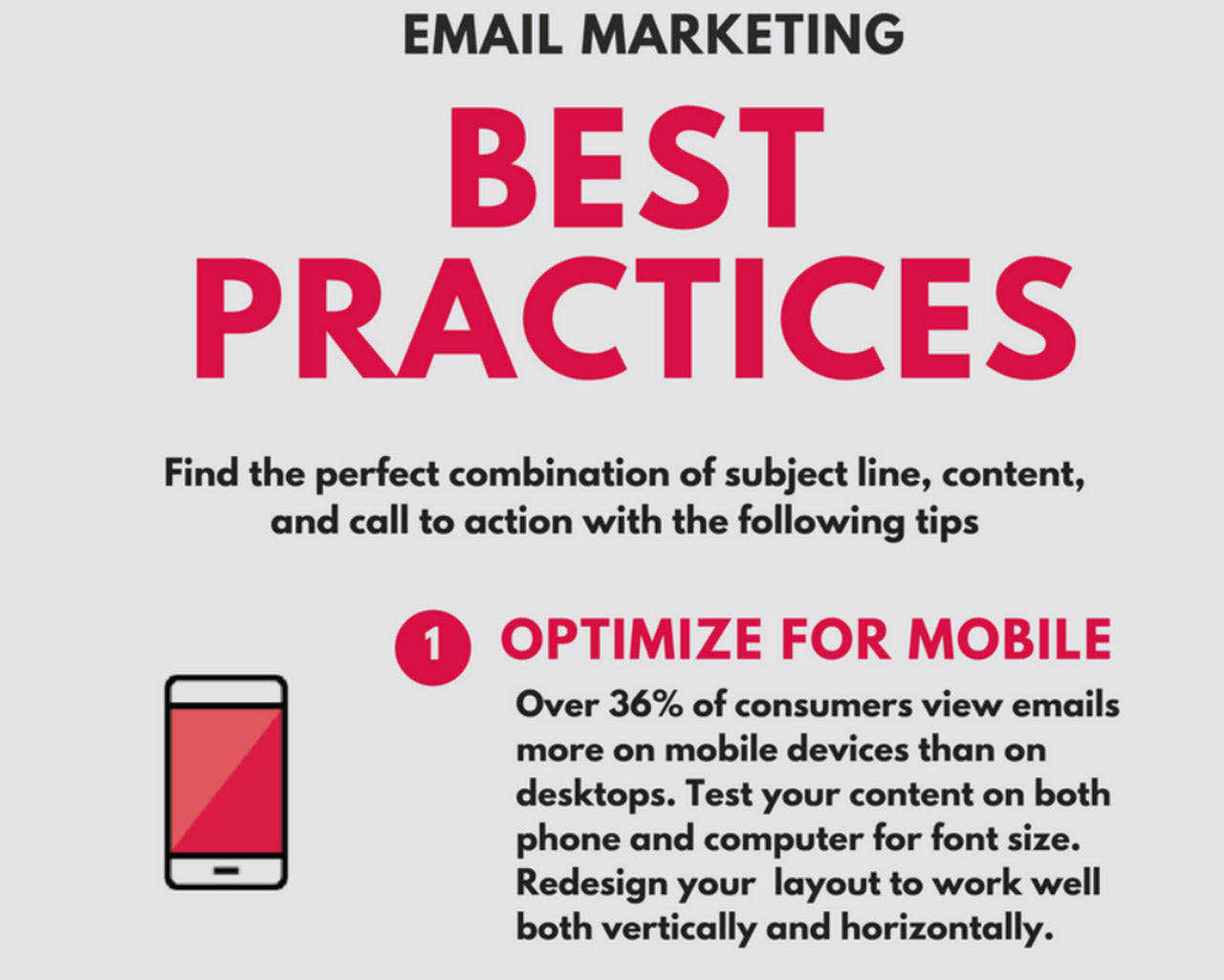
Snippet from “Email Marketing Best Practices” infographic by Coleen Eakins
Email Marketing Plan Templates
Every strategy starts with a good email marketing plan. If you need inspiration or a solid base, here are four templates and a professional service in this niche to assist you.
1. Email Marketing Planning Template by Hubspot
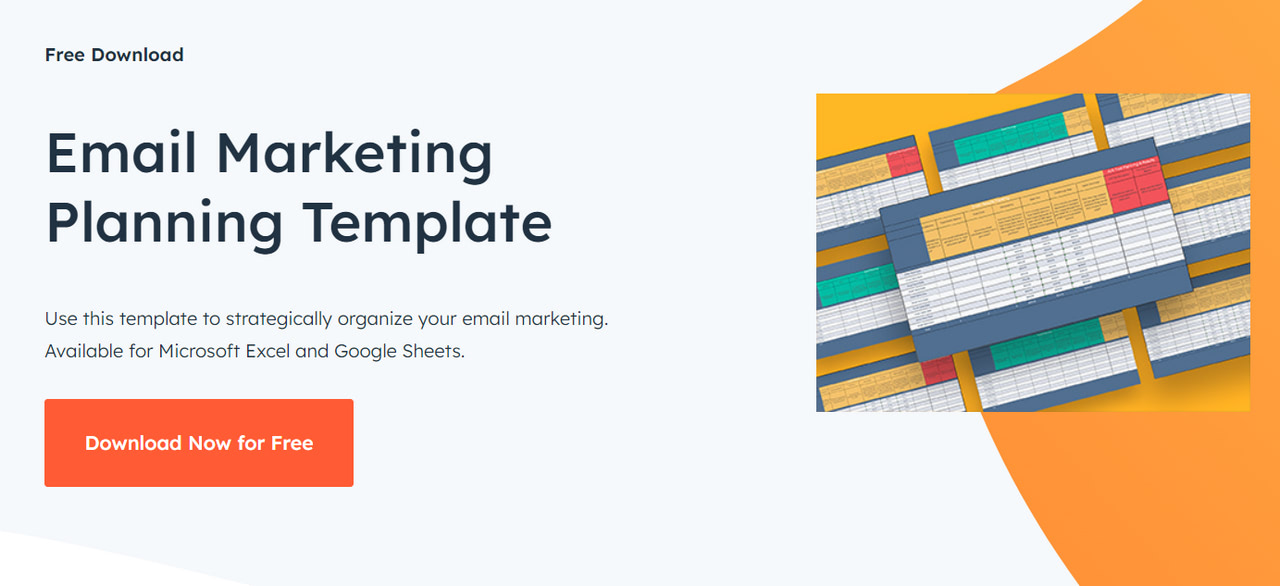
Leader in the email service provider niche, Hubspot is famous for its helpful tools for companies. The team is aware that planning all the moving parts of email campaigns is crucial yet stressful and error-prone; therefore, they have come up with a reliable solution.
Their email marketing planning template gives companies a solid foundation for organizing their actions and tasks under one roof, visualizing and clarifying strategy to make it less overwhelming.
You may use it to systematize sending routines, assign A/B tests, gather data about each campaign, recap overall results, calculate key metrics, and present data unobtrusively through Excel or Google Sheets.
2. Email Marketing Plan Template by Aweber
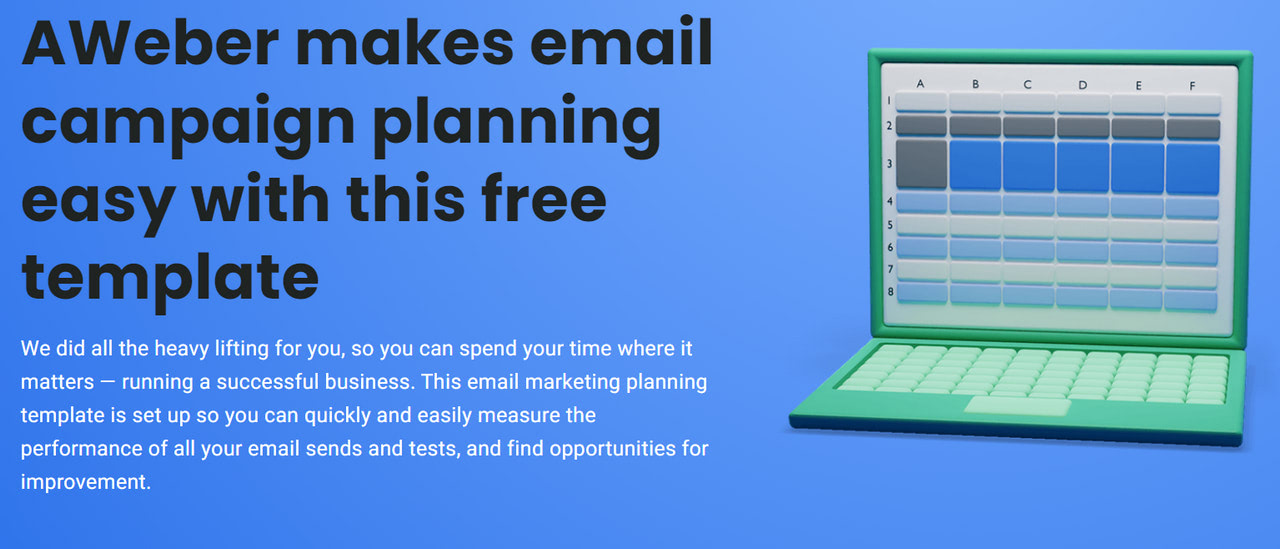
Aweber is a big player in the digital marketing arena. It excels at supplying companies with helpful tools and automation solutions that address needs across various communication channels. Their take on email marketing plans is backed by experience and expertise. Presented as a well-organized table and enforced with the spreadsheet formulas, it allows the company to do these tasks:
- Detail and organize email campaigns.
- Automatically calculate key email marketing metrics.
- View and compare the performance of campaigns.
- Assign split test.
- Compile data in Excel or Google Sheets.
It is a great starting point to shape your strategy through an email marketing plan.
3. Email Marketing Strategy Template by Coschedule
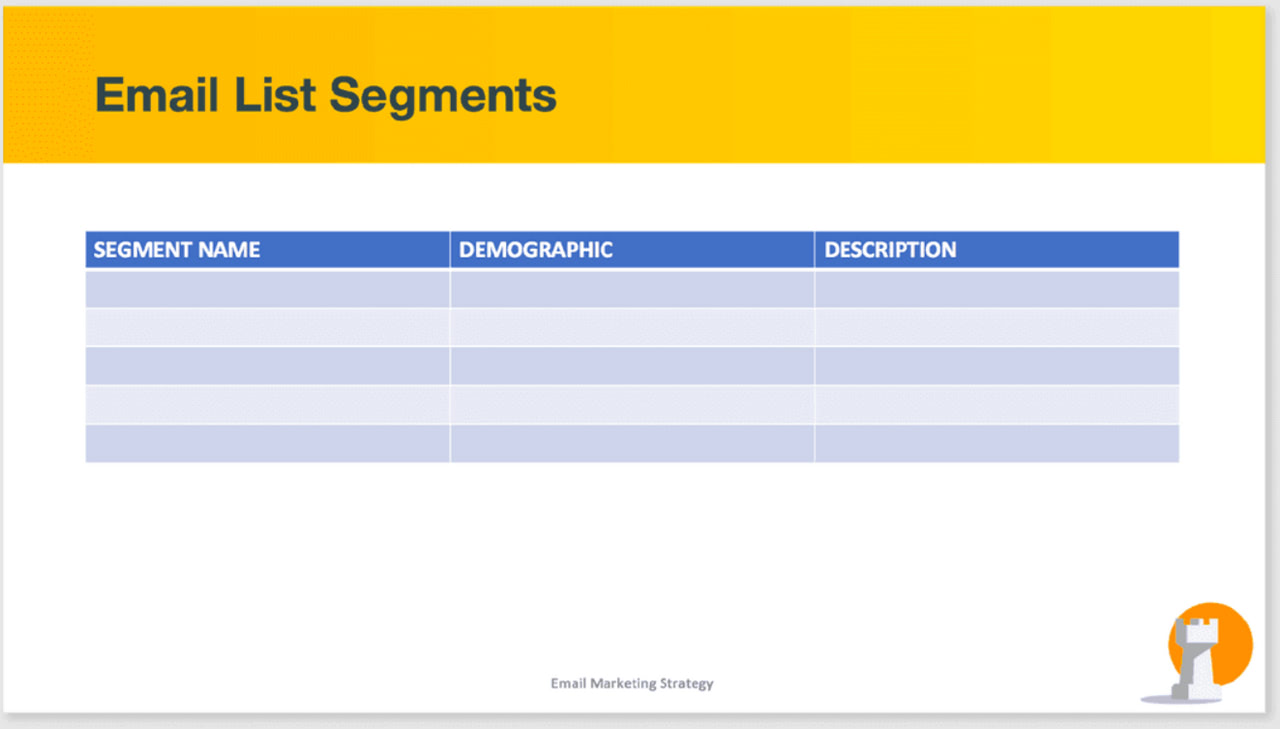
Coschedule is an all-in-one AI marketing calendar platform that organizes a company’s efforts across various channels. It offers instruments to bring together tasks, projects, tools, and resources in a pleasant, intuitive, and unobtrusive manner. The good news is that they also offer a free email marketing plan template.
Their solution revolves around the core features of good planning and lets companies bring to life their strategies through a well-documented schedule. They may feature audience segments, describe the campaigns in detail, depict execution routines, assign goals, collect metrics, and measure the results.
Interestingly, Coschedule’s email marketing plan template is powered by PowerPoint. It guides companies through the basic routine, making it a perfect solution for newbies.
4. Email Marketing Plan Template by Fit Small Business
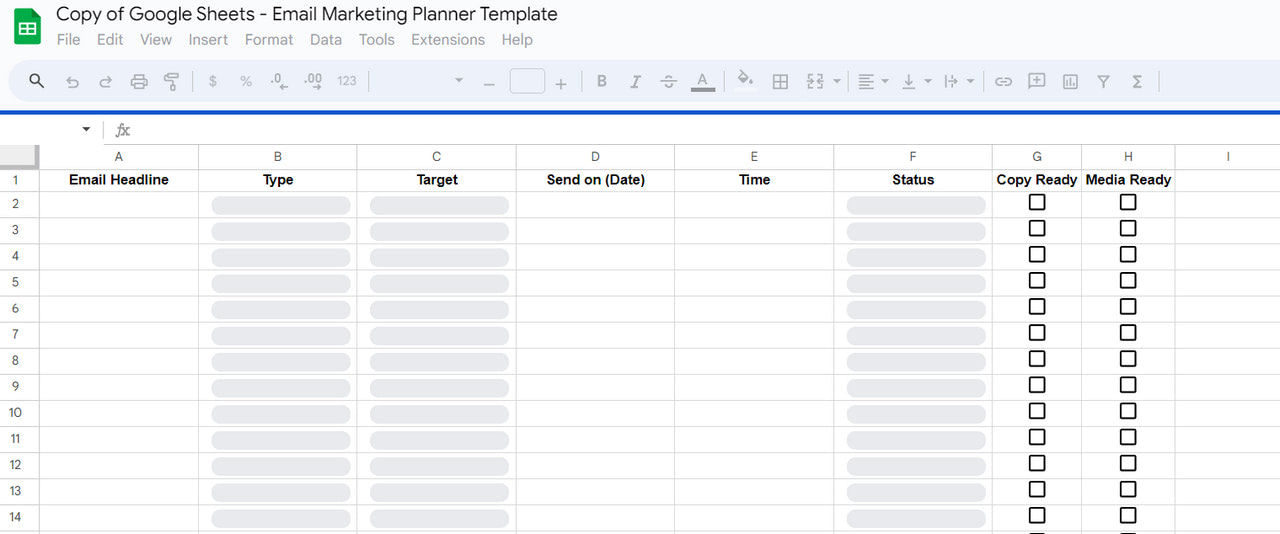
Established as a company that provides expert answers to all business questions, Fit Small Business values planning more than anything. Therefore, they have created an email marketing plan template to guide their clients through the organizational process.
Having pretty much the same structure as other templates in our list, it could be a perfect solution for your startup. You may easily break your strategy into tactical steps and blocks to clarify the path to creating and running high-converting email campaigns using your resources to the full extent.
The template is available in several basic formats: Google Docs, Google Sheets, Word Docs, and Excel. Choose the one that best suits you.
5. Planful
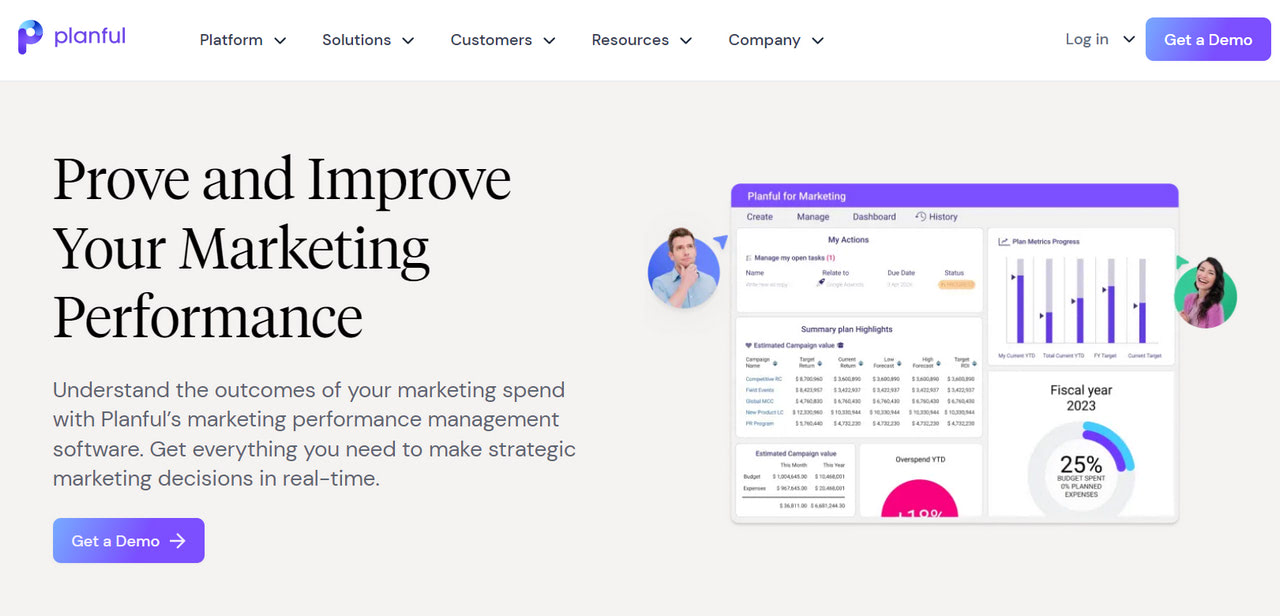
As the service’s name suggests, it is all about planning and improving marketing performance management through organizational order. It offers its clients a multifunctional email marketing planning platform along with tools to align with strategic goals and maximize work potential across departments.
Use it to build an agile email marketing plan, detail your goals and campaigns, allocate resources, and assign a budget. Collect and analyze metrics to optimize your strategy in real-time based on accurate and insightful performance data. Apply automation and integrate with other instruments to create a productive collaborative environment for your team.
Conclusion
The email channel has huge potential. Your success in this area largely depends on consistency, trust, and clarity in communication. Reaching subscribers with random emails is not enough. You need a clever, tailored approach to channel your efforts in the right direction and deliver on customers’ expectations. In a word, you need a deliberate strategy.
Every good email marketing strategy has a well thought out, regularly revisited email marketing plan at the core. It creates clarity in actions, keeps the company on the right path, eliminates confusion, and empowers team members for proactive initiatives.
As a cornerstone of successfully achieving marketing goals, an email marketing plan calls for commitment and devotion. Companies must research the industry data regularly, set SMART objectives, and describe every tactical step, effort, or campaign in detail. Much like strategy, the plan should also adapt to changes in the landscape; therefore, it must be revisited frequently to stay up-to-date.
Creating an email marketing plan that accurately reflects the strategy can be challenging but rewarding. Use professional templates and services to tackle this task effectively.







